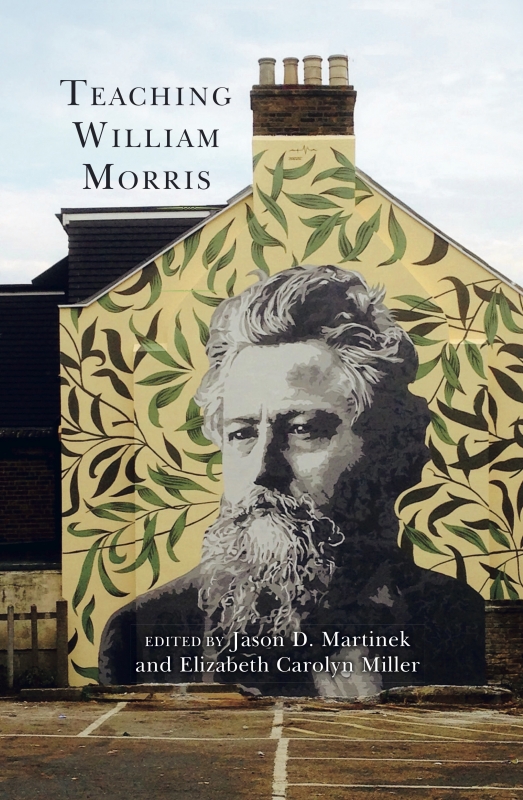Teaching William Morris, edited by Jason D. Martinek and Elizabeth Carolyn Miller

Teaching William Morris
Edited by Jason D. Martinek and Elizabeth Carolyn Miller
Tell us about your new book. What is its central project?
I co-edited a volume titled Teaching William Morris, which includes 21 essays written by a range of scholars and teachers who regularly teach William Morris's work. Morris is perhaps best known as a founder of the Arts and Crafts movement, but he was also a writer, a political activist, a printer, and a designer. Morris helped resurrect a number of handcrafts that were nearly forgotten in the wake of the Industrial Revolution, and he helped develop a new aesthetic in opposition to mass production and its exploitation of labor and the environment. Today his work is taught in a wide variety of disciplines, including art history, design, history, and literary studies, and we thought it would be helpful for teachers of Morris to get a sense of how he is taught in different areas of the university curriculum. We tried to extend the book beyond university teaching, too; we have one essay from a museum educator who focuses on engaging children in the legacy of the Arts and Crafts movement, and another essay from an author who wrote a children's novel about Morris.
What got you started thinking about this set of problems in this way?
I have been working on William Morris for a long time, and while I find his work endlessly inspiring, I have sometimes found him hard to teach. This is a common theme for many of the authors in this collection. When my co-editor, a historian named Jason Martinek, asked me to co-edit this book with him, I agreed in part because I thought that it would help me become a better teacher of Morris. I was also pleased to be able to include the work of some fellow Morrisians at UC Davis: we have an article from James Housefield, a professor in the Design department, and one from Elizabeth Grennan Browning, who recently completed her PhD in the UCD History Department. I had been having conversations about Morris with both of them for years, and these conversations helped me see how useful a cross-disciplinary collection like this could be as a pedagogical resource.
If you could pair this collection with one other text, what would you recommend? Why?
I would read our collection along with William Morris's 1890 utopian novel News from Nowhere. News is an endlessly strange and estranging book that I seem to be getting more and more obsessed with as the years go on. Last summer I even dragged my spouse and children through several of the main settings featured in the novel—not something any other book has prompted me to do. On that same trip I had the pleasure of seeing Morris's favorite tree, which is still growing strong. This was meaningful for me because part of what I've learned from his work is to pay attention to the ways that the past is alive in the present.
Teaching William Morris was published by Fairleigh Dickinson University Press. You can find it here.

